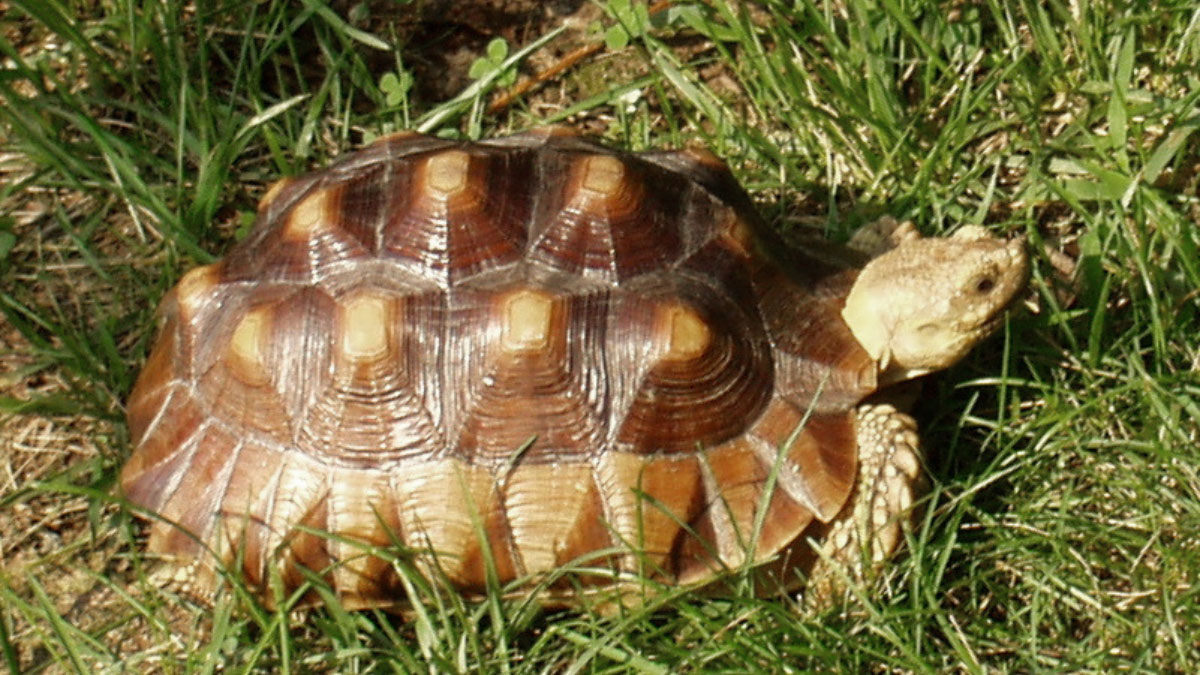Tortoise Pyramiding: Causes, Early Signs, Prevention, Treatment
Tortoises are fascinating animals that have become increasingly popular as pets in recent years. However, just like any other animal, they can develop health problems. One such issue that plagues tortoises is pyramiding.
What is tortoise pyramiding? What are the causes, early signs, prevention, and treatment of pyramiding? Tortoise pyramiding is a condition where the shell grows abnormally, causing the scutes to rise like a pyramid. Various factors, including improper diet, humidity, UVB lighting, and dehydration, among others, can cause this.
Read on to discover the early signs of pyramiding, how to treat it, and most importantly, how to prevent it from occurring in the first place. Understanding and learning all these can help your tortoise live a long, healthy life.
What Is Tortoise Pyramiding?
Contents
Tortoise pyramiding is a condition where the shell of a tortoise grows abnormally, causing the scutes to rise like a pyramid. It is a deformity that can occur in many species of tortoises, including Sulcata, leopards, and red-footed tortoises. It is more commonly observed in species that grow faster.
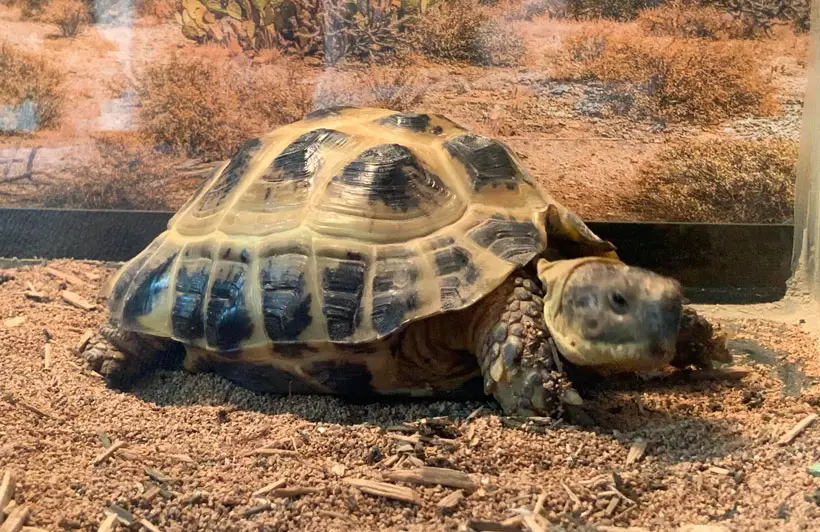
The condition is called pyramiding because the scutes on the carapace (upper shell) begin to form pyramid-like structures rather than growing smooth and round.
A tortoise’s shell comprises bony plates covered in keratin that grows continuously throughout its life. The scutes grow smoothly and horizontally in healthy tortoises, resulting in a well-rounded shell. However, in tortoises with pyramiding, the scutes grow unevenly, forming raised pyramid-like structures.
The condition is usually evident early on, but the severity of the pyramiding will depend on the tortoise’s age, the species, and the underlying causes. And red-footed tortoises are particularly susceptible to this condition.
What Causes Pyramiding In Tortoises?
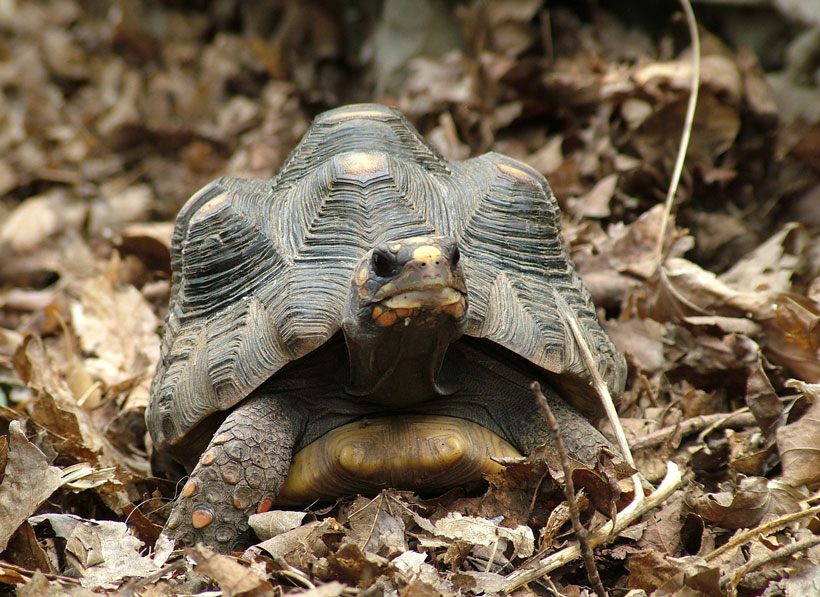
Several factors can contribute to the development of pyramiding in tortoises. That includes
1. Humidity
One of the most significant factors contributing to developing pyramiding in tortoises is inadequate humidity levels.
Tortoises require a humid environment to maintain healthy shell growth. And without enough moisture in the air, the scutes may grow unevenly and develop a pyramid-like shape. Inadequate humidity levels can also lead to dehydration and other health issues.
2. Improper UVB
Tortoises require access to UVB lighting to maintain healthy shell growth and prevent pyramiding. UVB helps tortoises synthesize vitamin D3, which is essential for proper calcium absorption and healthy bone growth.
Without adequate UVB exposure, tortoises may develop weak and uneven shells prone to pyramiding.
3. Improper Diet
Diet plays a crucial role in the development of pyramiding in tortoises. A diet that is too high in protein or lacks adequate fiber can contribute to developing this condition.
Tortoises require a diet high in fiber and calcium and low in protein and phosphorus to maintain healthy shell growth. An improper diet can lead to nutrient imbalances and poor shell development.
4. Dehydration
Dehydration can also contribute to the development of pyramiding in tortoises. Without adequate water intake, tortoises may become dehydrated, leading to weakened shells prone to pyramiding. Inadequate humidity levels can also contribute to dehydration.
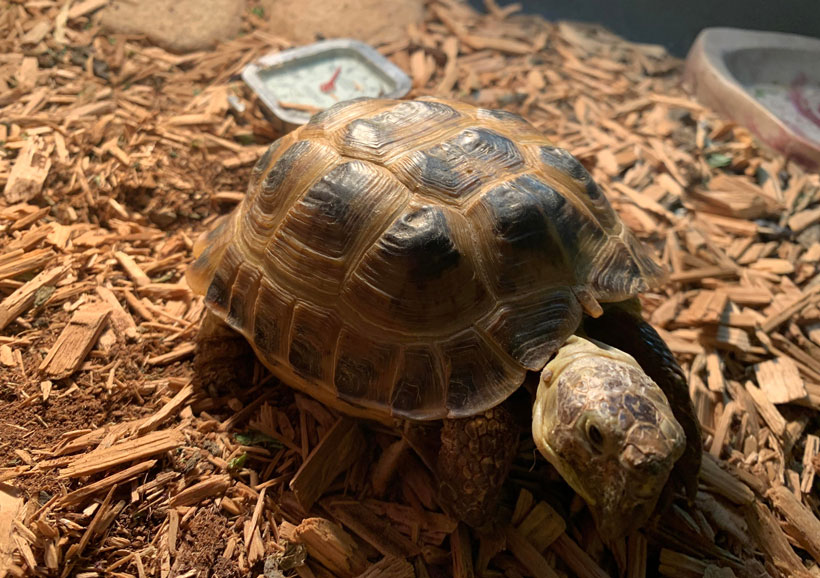
5. Inactivity
Tortoises require regular exercise to maintain healthy bone and shell growth. Their shells may not grow evenly without enough physical activity, leading to pyramiding.
6. Too Much Protein
Excessive protein intake can cause pyramiding in tortoises. This is especially true for young tortoises requiring a lower protein diet to prevent pyramiding.
7. Too Much Food
Overfeeding can also contribute to the development of pyramiding in tortoises. Excess weight can stress the tortoise’s shell, leading to uneven growth.
8. Improper Supplementation
Tortoises require adequate calcium and other nutrients to maintain healthy shell growth. The scutes may not grow evenly without proper supplementation, leading to pyramiding.
9. No Basking Area
A basking area is essential for tortoises to maintain proper body temperature and healthy shell growth. Tortoises may not receive enough UVB exposure without access to a basking area, leading to weakened shells prone to pyramiding.
10. Small Enclosure
Finally, a small enclosure can also contribute to developing pyramids in tortoises. Tortoises require a spacious enclosure that allows for adequate exercise and movement. A small enclosure can lead to poor shell development and pyramiding.
Here is a video to help you understand even more.
Early Signs Of Pyramiding In Tortoises
It is crucial to detect pyramiding early to prevent it from becoming severe. Here are some signs that your tortoise may be developing pyramiding.
Raised scutes
One of the earliest signs of pyramiding is the raised scutes on the tortoise’s shell. Scutes are the hard, bony plates that make up the shell. When a tortoise begins to pyramid, the scutes will start to bulge and rise, giving the shell a bumpy or uneven appearance.
Reluctance to move
If your tortoise is reluctant or has difficulty moving, it may be an early sign of pyramiding. This can be combined with an overall lack of coordination.
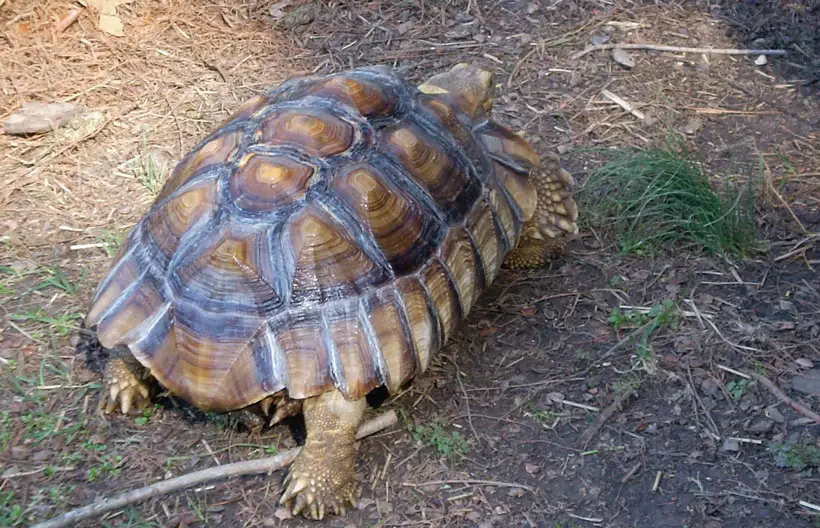
Ridge formation
As pyramiding progresses, the raised scutes can form ridges on the shell. These ridges will run parallel to the tortoise’s spine and can be felt by running your hand along the top of the shell. The ridges can be a few millimeters high and several millimeters wide.
Discolored shell
A discolored shell can also be an early sign of pyramiding. The shell may appear darker or lighter than usual or have spots or blotches on it.
Limb fractures
Tortoises with pyramiding also have an increased risk of limb fractures. This is because the abnormal growth of the shell can put pressure on the limbs, making them more prone to breaking.
Soft shell
A healthy tortoise shell is hard and sturdy, but when a tortoise starts to pyramid, the shell can become softer than normal. This is due to a lack of proper nutrition and can be a sign that the tortoise is not getting enough calcium or other essential nutrients.
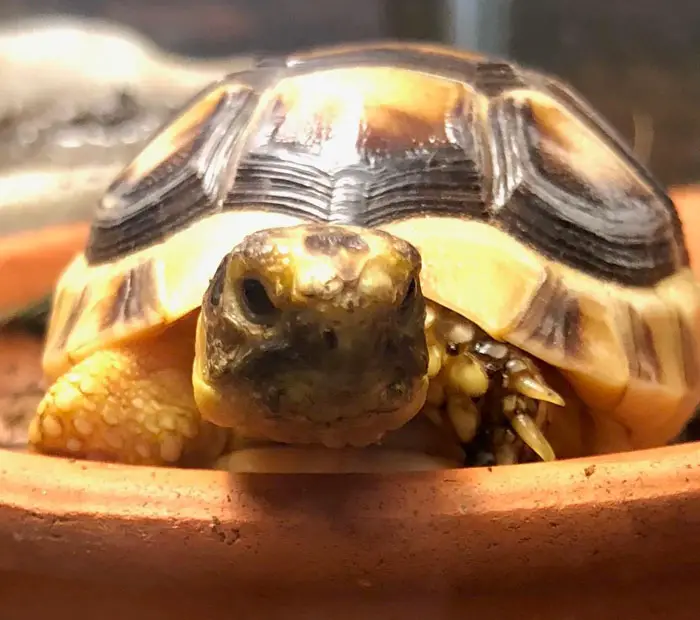
Risk of egg-binding in female tortoises
Female tortoises with pyramiding also have an increased risk of egg-binding. This is because the presence of soft-shelled eggs can make it difficult for the tortoise to pass them.
Slow growth
Pyramiding can also cause the tortoise to grow slower than normal. This is because the energy that should be going towards healthy growth is being used to try to repair the damaged shell.
Over time, the slow growth can become more pronounced, and the tortoise may end up being smaller than it should be for its age and species.
Misshapen shell
As pyramiding becomes more severe, the shell can become deformed and distorted. The scutes can become dislodged from their proper position, causing the shell to become uneven or lopsided. This can cause significant discomfort to the tortoise and affect its overall health and well-being.
Treatment Of Pyramiding In Tortoise
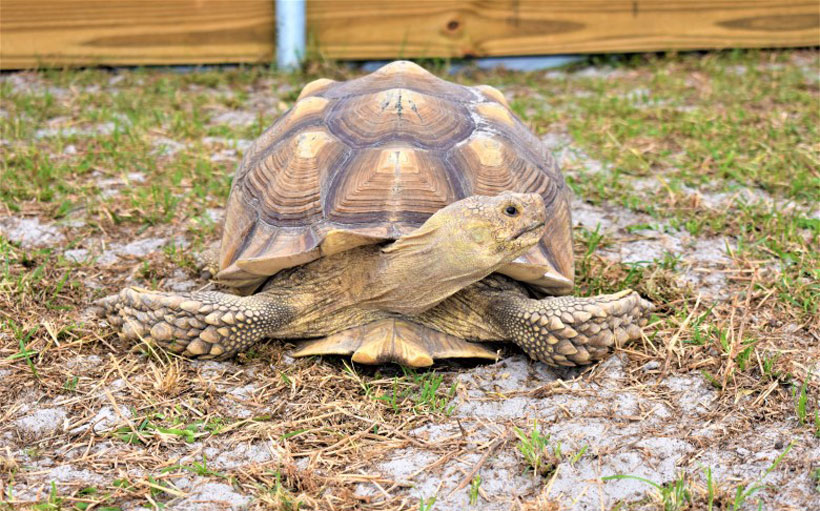
The treatment for pyramiding in tortoises varies depending on the severity of the condition. Correcting the underlying cause can help prevent the pyramiding from progressing in mild cases.
- For instance, if the cause of pyramiding is related to an improper diet, correcting the diet by reducing high-protein and high-calcium foods can help improve the condition.
- In moderate cases, the tortoise may require additional treatment, such as regular soaking in warm water to keep them hydrated and increase their appetite. They may also require special supplements to help strengthen their shell.
- In cases where the damage is extensive, a veterinarian may recommend surgery to remove the damaged sections of the shell.
- Although the procedure is effective, it must be noted that shell damage is permanent and cannot be reversed. Therefore, it is vital to prevent pyramiding before it becomes severe.
Prevention Of Pyramiding In Tortoises
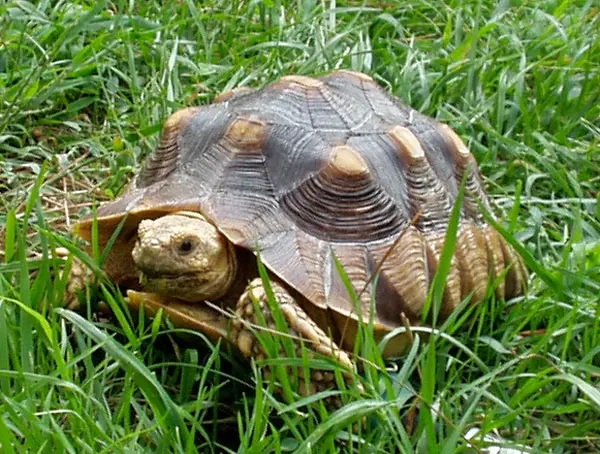
Preventing pyramiding is the best way to keep your tortoise healthy. Here are some tips to help prevent pyramiding in tortoises.
Maintain proper humidity levels in the enclosure
Humidity is essential for the health of tortoises. Providing a humid environment will help prevent pyramiding.
- You can do this by misting your tortoise’s enclosure with water regularly.
- Alternatively, you can provide a humid hideout, a small enclosed space with a damp substrate inside. This can help maintain humidity levels in the enclosure.
Ensure that the UVB lighting is positioned correctly
Tortoises require UVB radiation to synthesize Vitamin D3, which is essential for healthy bone development.
- Ensure that your tortoise’s enclosure receives adequate UVB radiation by providing a high-quality UVB bulb.
Provide a balanced diet that is high in fiber and calcium
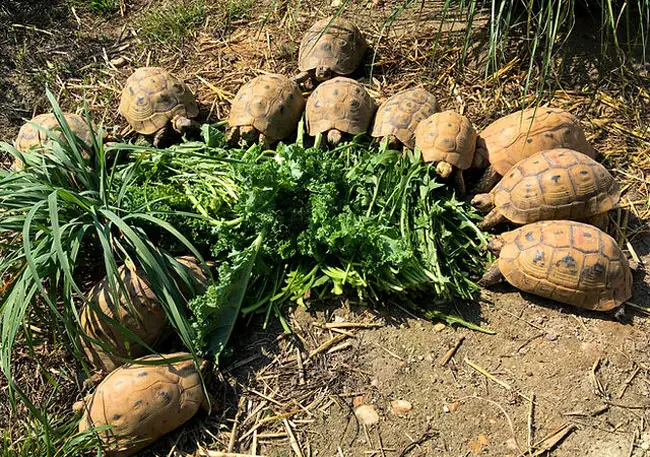
Tortoises require a diet that is rich in fiber and low in protein.
- So avoid feeding your tortoise a diet too high in protein, which can lead to pyramiding.
- Feed your tortoise a variety of leafy greens, vegetables, and fruits to ensure they get all the necessary nutrients.
- Provide calcium supplements in the form of cuttlebones or powdered supplements to help ensure healthy bone development.
Ensure the tortoise is hydrated by providing clean water and soaking if necessary
Dehydration can cause pyramiding.
- Ensure that your tortoise has access to clean, fresh water.
- Also, consider soaking your tortoise in shallow water for about 15 to 20 minutes weekly. This will help keep your tortoise hydrated and healthy.
Encourage activity by providing a large enclosure and toys
Tortoises need exercise to maintain healthy bone and shell development.
- Ensure that your tortoise has enough space to move around and exercise.
- Enclosures should be spacious enough for your tortoise to walk around and have access to a basking area.
Provide a warm and well-lit basking area
Tortoises require a basking area to regulate body temperature and maintain healthy bone development.
- So provide a basking area with a heat lamp to allow your tortoise to bask in warmth.
FAQs
There are a couple more related questions you might be asking yourself right now. Here are the most relevant ones.
No, pyramiding is permanent shell damage that cannot be reversed. However, early intervention can prevent it from worsening.
Yes, pyramiding can cause health problems like shell deformities, weakened immune systems, and digestive issues.
Generally, hatchlings should be fed daily, while adults can be fed every other day. However, it is best to consult a veterinarian to determine the appropriate feeding schedule for your specific tortoise.
Conclusion
Tortoise pyramiding is a severe condition that can affect a tortoise’s health. It can cause deformities to the shell and other related health problems. As a tortoise owner, it is essential to understand the causes, early signs, and preventive measures to avoid this condition.
Providing a proper diet, a suitable habitat, and adequate hydration are key factors in preventing tortoise pyramiding. If you suspect your tortoise has pyramiding, seek veterinary attention immediately. Early intervention and treatment can help stop the condition from progressing. Remember, prevention is always better than cure.

